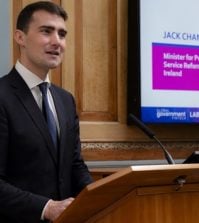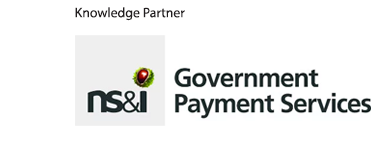Fixing governments’ broken financial systems

Many finance departments have rescued their economies from major crises twice since 2008, but do they have the tools and assets to do so a third time? At the Global Government Finance Summit, senior leaders discussed how to fix the deep flaws in countries’ management tools and accounting processes
To track how money is distributed and spent across government, finance ministry leaders need to talk the same language as departments’ chief financial officers – using shared metrics and compatible systems that provide common ways of measuring public spending. In the complex, atomised and under-resourced field of civil service financial management, this is a big ask. And even where finance leaders can agree a way of counting, some are asking a still larger question: what sum are we trying to solve?
Over recent years, people have begun to question traditional methods of public sector accounting and goal-setting – asking whether they provide a realistic picture of nations’ financial health, incentivise the right behaviours or meet the public’s needs. The growing focus on “wellbeing” metrics – broadening the historic emphasis on GDP as a measure of success – is one obvious example. Another is the UK government’s decision to change the way HM Treasury calculates return on investment, redirecting spending away from the areas of greatest economic activity towards those where the money can make the greatest difference.
At the 2021 Global Government Finance Summit session entitled ‘A broader balance sheet: accounting for the real world’, senior treasury and finance department leaders from nine countries – meeting online for two days of informal discussions – covered both topics, asking both how to improve the measurement of resource flows, and how best to make use of the resulting data.
Fighting ‘fragmented, complex and outdated’ systems
Christine Walker, assistant comptroller general at the Treasury Board of Canada Secretariat, spends her working life focusing on the first question. As head of the country’s Financial Management Transformation programme, she explained, she’s working to modernise the Canadian government’s “fragmented, complex and outdated” financial systems. The country’s more than 100 civil service bodies currently use “48 separate installations of departmental financial systems”, she noted. “We have disparate operations using outdated technologies and unique legacy processes. Because it’s never been centrally managed, each installation can have different processes and financial data structures. And there’s been years of customisation, which drives higher maintenance costs.”
This uneven landscape makes it “very difficult to gather consistent, government-wide information,” she commented. And feeding data into the system is just as awkward: “Every one of those 48 financial systems has to have an interface with the pay system – so if you make a change to the pay system, you’ve got to update 48 other instances.”
Walker’s programme is designed to address these challenges. Introducing a more comprehensive standard data model, for example, will unify definitions and standards across government – supporting the creation of “consistent, government-wide information” – and moving departmental systems into a shared cloud will ease data-sharing and system updates. Facilitating automation and cutting the manual work required to bring data up to scratch, the reforms should free up senior staff to make full use of their skills: “If we can move those senior financial people to spend more time on analysis and less time on transposition of numbers, we should be able to get much, much better financial and performance information for decision-making,” she said.
Adding coherence to a chaotic finance system
To achieve these goals, Walker’s team intend to move all departments onto SAP’s S/4HANA financial management system: they’ve already consolidated the legacy SAP contracts held by 55 federal bodies into a single 10-year deal. Meanwhile, she explained, they’re developing a “digital core template”: a “baseline solution with all the basic requirements that departments need. Then if you need additional requirements, you can add them. The principle is that we build it once, and use it everywhere.”
To make adoption still simpler for smaller and less complex federal bodies, she added, she’s exploring ways to “offer ‘software as a service’, delivering our financial systems as a subscription service by a service provider. Then organisations won’t need any infrastructure or expertise within them”. This approach should make the transition as straightforward as possible, commented Walker, while providing a basic model that can be adapted to meet the needs of larger departments and those with specialised financial requirements.
Providing support with change management is a major part of the programme. “Tools and training is going to be a big deal,” said Walker: the Treasury Board is running education and exchange workshops with CFOs across government, though she noted the need to improve awareness among ministers, departmental leaders and public service employees. Stakeholders will need to be persuaded of the need to invest in updating financial management, Walker added – finding resources in hard-pressed capital budgets. Wary of promising big savings in operational costs, Walker’s team are focusing on how improving financial data and reducing manual work will enable finance teams to provide better advice, forecasts and analysis to policymakers and organisational leaders.
Coaxing in government customers
Non-finance staff can be useful advocates of these new capabilities, commented Alex Metcalfe, global head of public sector at event knowledge partner the Association of Chartered Certified Accountants (ACCA) – a global professional body with 230,000 full members. “Policy professionals, those working on procurement – all those who could be making use of the insights generated through the finance function” can help to move finance reforms along, Metcalfe said.

So far, only one department has migrated to the new system; this is very much a long-term programme, Walker explained. “We’ve got over 100 departments to get done by 2030,” she commented. “We’re very early into the journey.” In the transition’s early years, most of the advantages will fall to individual departments – which should find it easier to produce accounts, manage spending and analyse financial data. But as more federal bodies switch over, systemic benefits should appear: the centre will gain a much clearer picture of cross-government resource flows, while the task of updating financial policies in systems across government will become far less labour-intensive.
Over the coming years, the need to make coordinated reforms to departmental systems is likely to grow, as existing approaches to public sector financial management are looking ever more out of step with the real risks and liabilities facing finance departments. Many of these were highlighted in new research carried out by the ACCA with the World Bank, the International Public Sector Accounting Standards Board and national governments, said Metcalfe, as he set out some of their alarming findings.
Borrowing, but off the books
Governments have spent about US$16 trillion in response to the pandemic, he said, “but it wasn’t just the size of these interventions that was of interest; it was the composition.” In many countries, the size of ‘above the line’ spending – such as cash transfers and furlough payments – was dwarfed by ‘below the line’ commitments: promises made by government, such as loan guarantees and equity injections.
“These below the line measures aren’t captured in typical economic metrics, and that’s a real challenge,” commented Metcalfe. Many of these chickens are likely to come home to roost – with governments required to pay off the guaranteed bank loans made to collapsed businesses, for example – but these liabilities aren’t currently recognised in calculations of the public finances. In the view of Maggie McGhee, ACCA’s executive director for governance, “these significant non-debt liabilities must be effectively identified, measured and managed to protect the future”.

Because metrics such as debt to GDP ratios show a distorted picture of nations’ financial health, Metcalfe argued, they shouldn’t be used to decide fiscal frameworks or set borrowing limits. The failure to recognise below the line policies creates “fiscal illusions that can create the appearance of a stronger financial position than the reality,” he added. As the scale of these interventions grows, setting them aside in fiscal policymaking “isn’t an option any more.”
Avoiding a frightening future
Using the UK’s public sector balance sheet as an example, McGhee showed how the government’s ‘net worth’ declined in the years after the 2008 financial crisis thanks to a combination of bank bailout spending, increasing pensions costs and other liabilities. “COVID’s impact could be no different for the UK and many other countries,” she warned, explaining that long-term projections by the UK’s Office for Budget Responsibility envisage UK public debt rising past a “completely unsustainable” 400% of GDP by 2070.

It’s not too late to avert such huge debts, said McGhee: “There’s an opportunity for governments to take early decisions to improve their public finances, and that will have a huge impact on their long-term sustainability.” And to get those decisions right, said Metcalfe, governments should “transition towards focusing on public sector net worth. Instead of only looking at the stock of debt and the cashflows within a particular year, we need to reflect on non-debt liabilities and the other side of the public sector balance sheet: the financial and non-financial assets available to public sector organisations.”

Taking a public sector net worth approach, said McGhee, creates “the opportunity to maximise the return on public assets”: when organisations must tot up the value of everything on their books, they look for ways to – for example – monetise intellectual property or rent out unused land. Research carried out in Sweden, she added, has suggested that maximising those returns could generate more revenue than corporation tax.
Highlighting the peculiar incentives within some existing systems, one participant recalled their time at a department with a large asset portfolio. These assets’ book values, which dated back over 100 years, were a small fraction of the prices they’d have fetched in today’s markets. But because maintenance budgets were calculated as a percentage of asset values, finance staff were encouraged to keep using the outdated numbers – leading to inadequate maintenance spending, and reducing any incentive to generate revenue from the department’s valuable assets.
Defrauding future governments
Just as counting public sector net worth encourages organisations to realise the full value of their assets, McGhee continued, it also fosters better decisions on public spending. Initiatives that hide liabilities off the balance sheet – like those pandemic-response loan guarantees – are attractive to elected and finance leaders charged with restraining national debt within its current, narrow definition. But the fact that liabilities are concealed doesn’t make them less costly: as McGhee pointed out, loan guarantees could “result in unexpected additional pressures on public sector finances in the future.” So accounting systems should recognise the true costs and risks associated with different policy options. “The proper recognition of liabilities is absolutely critical in achieving value for money for those government interventions,” said McGhee.
Finally, she highlighted the importance of integrating non-financial considerations into spending and budgeting decisions, commenting that “achieving an inclusive and green recovery requires policymakers to look beyond the financials.” New Zealand is now building ‘wellbeing’ metrics into its national budgeting process, for example, and McGhee noted that it is also ahead of the curve on moving towards a net worth approach. The government has been calculating the true value of its assets and classifying them “as social, financial or commercial, where the commercial assets have much more of a scope for financial returns,” she explained; now it’s encouraging agencies to develop revenue streams from this latter group.

This is a fruitful area for international collaboration between public finance professionals, commented Elaine Boyd, associate director of audit quality and appointments at Audit Scotland. “I’d like to see some more uniformity or standards around some of this,” she said. “There’s opportunities to have really worthwhile conversations around how we could do it in the future.”
Like the modernisation of Canada’s financial management systems, the task of updating governments’ approach to public accounting is a huge one. And as Walker pointed out, after 18 months in crisis response mode, civil service finance professionals are exhausted. “We all thought COVID would end, and it seems to keep on going,” she commented. To make her transformation programme work, “we have to get senior leaders engaged again; to work with them to get time with their teams, to put in resources. And that is difficult – both because they’re tired, and because it’s such a big change.”
Yet unless governments reform public finance management – adopting accounting techniques that reflect the true financial picture, and giving civil servants effective management systems – they’ll always be trying to solve the wrong problem with outdated tools. At the Global Government Finance Summit, finance leaders began to outline some of those essential reforms: as Metcalfe said, “through platforms like this, we’re able to share global good practice and try to navigate our way through what’s been quite a challenging period.”
The 2021 Global Government Finance Summit was held online in late October 2021. This is the second of four reports on the Summit’s sessions, covering the session named ‘A broader balance sheet: accounting for the real world’. The first covered the discussion on how COVID marks a ‘global inflection point’ in many economies; the third examined the spiralling demands of crisis response; and the fourth explored the roles and development of finance leaders. To ensure that people can speak freely at the event, we check quotes with the speakers before publication.
- Global Government Finance Summit 2021 attendees
- Noureddine Bensouda, General Treasurer of the Kingdom, Morocco
- Gil S. Beltran, Undersecretary, Department of Finance, Philippines
- Pablo de Ramón-Laca, Director General – Treasury and Financial Policy, General Secretariat of the Treasury and International Finance (Spanish Treasury), Ministry of Economic Affairs and Digital Transformation, Spain
- Peter Lim, Director – Fiscal Policy, Ministry of Finance, Singapore
- Leena Mörttinen, Permanent Under-Secretary, International and Financial Markets Affairs, Finland
- Markus Sovala, Director General, Statistics Finland, Finland
- Christine Walker, Assistant Comptroller General – Financial Management Transformation, Treasury Board of Canada Secretariat, Canada
- Christian Dahlhaus, Head of Division, German Recovery and Resilience Plan/ Task Force Covid-19, Federal Ministry of Finance, Germany
- Wenshan YEO, Director – Economic Programmes, Ministry of Finance, Singapore
- João Boa Francisco Quipipa, Economist and Government Advisor, Angola
- Elaine Boyd, Associate Director of Audit Quality and Appointments, Audit Scotland, Scotland
- Maggie McGhee, Executive Director – Governance, ACCA
- Alex Metcalfe, Global Head of Public Sector, ACCA
- Jennifer Duncan, Vice-President Government Innovation, Mastercard
- Dr. Shefiu Abiodun Muritala, Accountant General – Lagos State, Nigeria
- Haji Ibsa Gendo, Director General, Ministry of Finance and Economic Development, Ethiopia























